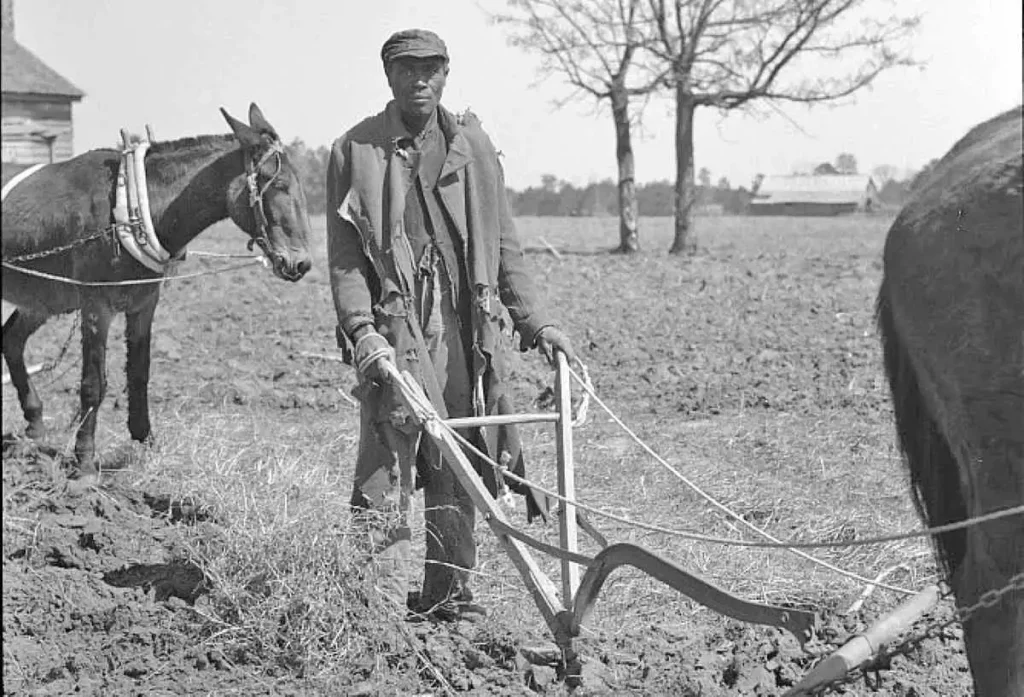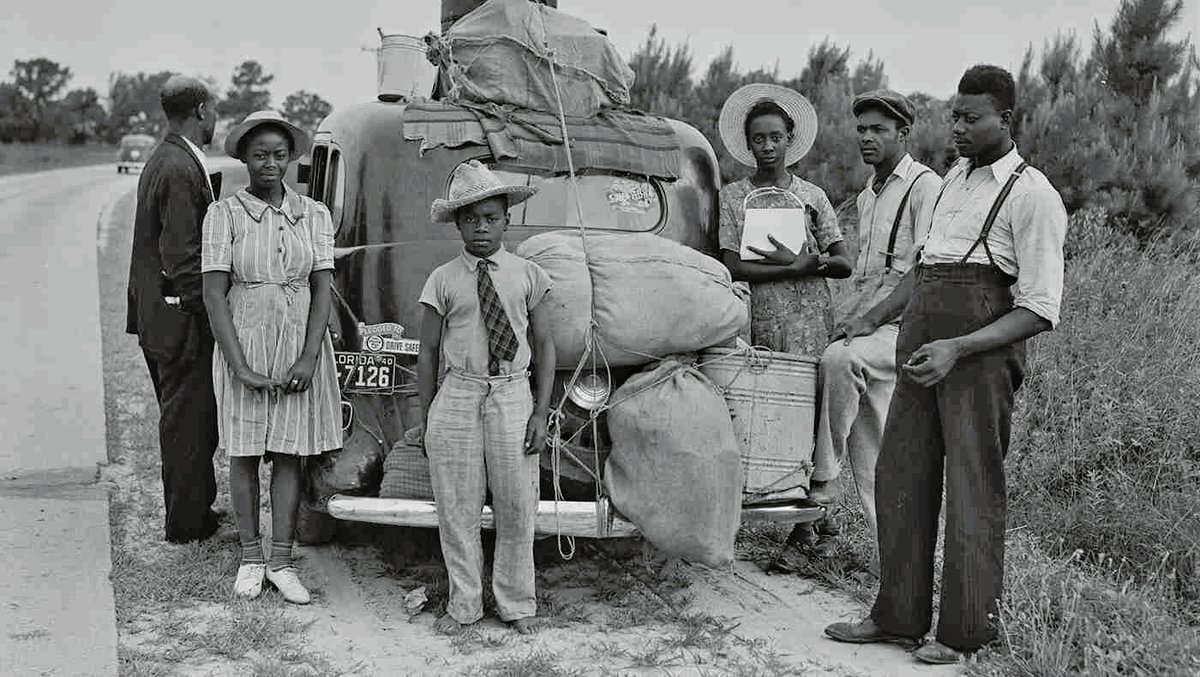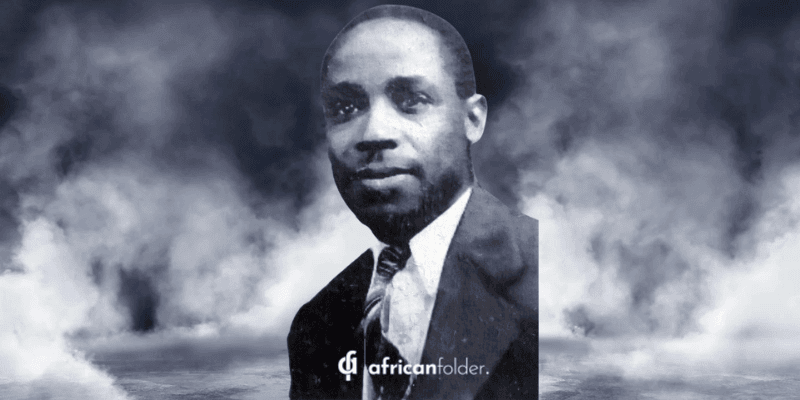The story of African Americans in the US is closely related to population shifts. African Americans have continuously changed the demographics of the country through forced relocation during the Transatlantic Slave Trade and the unceasing quest for opportunity. The Great Migration, which took place between about 1916 and 1970, is one of these movements that stands out as a critical turning point that had a significant effect on African Americans and the cities to which they relocated.
This essay explores the intricacies of the Great Migration, examining the forces that propelled the movement, the experiences of migrants in their new urban settings, and the long-lasting changes they brought about in American culture.
Here, we explore the story of African Americans;
A Legacy of Oppression: The Push Factors
The decision to leave the South was not simple. Generations of African Americans had established roots in the land, formed families, and fostered a sense of community. However, the Jim Crow South portrayed a bleak reality. Disenfranchisement, a system intended to deny African Americans the right to vote, effectively barred them from political participation. Sharecropping, an exploitative system, kept them stuck in a cycle of debt and poverty. Racial violence, both overt and covert, remained a constant threat to their safety and well-being.
This multi-racial system was deliberately established to limit the black community in terms of educational, social and economic improvement, which could be viewed as another trigger factor for the African Americans leaving their homeland. People feared for their lives, they dreamed of being independent, they desired a peaceful life, and they had an opportunity to create a better future for themselves. This was the essence of the motivation.
The North Beckons: The Pull Factors
The restrictive atmosphere of the South was tinged with news of opportunity. Compared to the meagre returns of agriculture in the South, the expanding industrial centres of the North and West offered employment with higher wages. The First World War (1914–1918) made this desire stronger. Growing industrial centres experienced a severe workforce shortage as a result of the conflict. News about the demand for labour in factories, shipyards, and steel mills was disseminated by newspapers, letters from relatives who had previously migrated, and even by travelling recruiters.
These tales, which offered hope for a better life, inspired optimism in a lot of African American communities. Once a distant dream, the North emerged as a real possibility—a location where one could break free from Jim Crow’s suffocating grip and create a better life.
The First Wave: A Hopeful Exodus (1916-1929)
African Americans left the South in large numbers during the first wave of the Great Migration, which took place between 1916 and 1929, driven by both push and pull forces. With nothing more than hopes and dreams, hundreds of thousands of people fled their homes, their sights set on cities like Chicago, Detroit, New York, and Philadelphia. These cities were drastically changed by this invasion. Previously little Black villages grew to enormous proportions, becoming the hubs of African American culture. For immigrants looking for a feeling of community and a link to their past, Detroit’s Black Bottom, New York’s Harlem, and Chicago’s Bronzeville developed into important cultural and social centres.
Building a New Life: Challenges and Triumphs
The North wasn’t quite the paradise Black migrants had hoped for. Sure, the factories paid better than back-breaking sharecropping, but those jobs were rough. They were hot, loud, and dangerous, with nothing but the same task over and over again, day in and day out. There wasn’t much chance of moving up the ladder. Finding a decent place to live was tough too. Because of racism, Black families ended up crammed together in segregated neighbourhoods that were falling apart. Sure, these neighbourhoods buzzed with life and culture, but they were missing the basics – clean streets, decent plumbing, the whole works. All this simmering tension between the races eventually boiled over into riots that tore cities like Chicago and Detroit apart.
Still, they didn’t give up easily. African Americans delved deep and discovered one another’s power. A close-knit community where they could appreciate their distinct culture and heritage was created as a result of their shared struggles. Churches evolved and became social hubs with a flurry of activity, much more than places for Sunday services. Individuals banded together to support one another during difficult times, forming groups to offer assistance when required. Schools provided a chance for the next generation to receive an education and break the pattern, albeit being segregated and frequently lacking in resources. Black-owned companies began to appear; despite numerous obstacles, they were able to prosper. They provided a service to the increasing number of Black families residing in the city.

A Flourishing of Black Culture: The Harlem Renaissance
The Great Migration wasn’t all just tough times. It sparked a golden age for Black creativity in art, music, and writing! Harlem, a neighbourhood in New York City, became the centre of this explosion in the 1920s, called the Harlem Renaissance. Writers like Langston Hughes and Zora Neale Hurston finally had a platform to tell their stories, the stories of Black folks in America. Musicians like Duke Ellington and Louis Armstrong cooked up amazing new sounds that spread all over the world. Even artists like Jacob Lawrence and Aaron Douglas got in on the act, painting pictures that captured the hopes and struggles of Black people on the move. The whole movement was a giant middle finger to racism, a booming declaration of Black identity and pride!
Entrepreneurial Spirit: Black Businesses Take Root
The North wasn’t just about factory work, you know? Many Black folks who came up North had a fire in their bellies – a dream of being their boss. Of course, it wasn’t exactly easy to find suitable houses to rent or to secure loans from white banks. However, that didn’t deter them! Black-owned companies began to spring up everywhere, catering to the increasing number of Black families residing in the city. We’re talking about welcoming grocery stores with smiling faces, restaurants that served soul food that made you feel at home, hair salons where you could unwind and gossip with your pals, and even newspapers that featured stories from a Black viewpoint. These companies wanted to create something unique, a community where people felt heard, accepted, and proud of who they were, not just make money.
Consider the case of Madam C.J. Walker. She wasn’t just any millionaire—she started a whole hair care company from nothing! Her experience is a prime illustration of the grit and devotion that Black companies showed to their local communities throughout the Great Migration. These companies, despite their modest beginnings, brought a great deal of Black pride to the neighbourhoods, helped people maintain themselves and their families, and produced jobs.
A Second Wave: World War II and the Urban Shift (1940s-1970s)
The war effort cranked back up in the 1940s (you know, World War II), and factories needed all hands on deck again. This time, the West Coast was booming, especially in cities like Los Angeles, Oakland, and Seattle. Black folks who had learned skills during the earlier migration to the North were perfectly positioned to grab these new jobs in shipyards and aeroplane factories. It was a big pull – a chance for a good paycheck. By 1970, the number of Black folks living in cities had skyrocketed from just 10% to a whopping 70%!

Beyond the North: A More Nuanced Picture
The North wasn’t the only place calling Black folks during the Great Migration. While it offered a lot of opportunity, some folks headed to booming Southern and Western cities like Atlanta, Houston, and Dallas. These cities were growing fast, thanks to industries like oil and aerospace, and offered jobs that just weren’t available back on the farm. The move wasn’t always about factory work either. Some folks had their sights set on education or even becoming professionals like doctors, lawyers, and teachers. They all wanted a shot at a life free from Jim Crow restrictions, and the Great Migration offered that chance.pen_sparktunesharemore_vert
The Great Migration’s Lasting Legacy
The Great Migration wasn’t just people moving, it was a whole reshaping of America’s cities. With so many Black folks arriving, these urban centres became different places, buzzing with a new kind of energy. Black neighbourhoods sprouted up, full of creativity and innovation. Music like jazz and blues was born right out of the experiences of these migrants, their struggles and joys woven into every note. And let’s not forget, the move also helped build a strong Black middle class. With more money in their pockets, Black folks had a louder voice, paving the way for the Civil Rights Movement that rocked the country in the 50s and 60s. Cities like Chicago and Detroit became known for Black political power, with leaders like Harold Washington (Chicago’s first Black mayor) and Coleman Young (Detroit’s first Black mayor) showing everyone what was possible. The Great Migration wasn’t just about leaving the South, it was about building a whole new future.
Beyond the Rosier Picture: Challenges Persist
The Great Migration tale is not without its dark side, though. Today, African Americans still confront prejudice, segregation, and restricted economic mobility as obstacles to their migration. Many of them discovered opportunities in the North, but discrimination persisted in housing, work, and education. Many African Americans were forced to live in overcrowded and underdeveloped areas as a result of redlining, a discriminatory practice where banks refused mortgages to inhabitants of specific neighbourhoods, frequently Black neighbourhoods. African Americans’ experiences in metropolitan settings are still shaped by these obstacles today.
A Tapestry Woven from Struggle and Resilience
The Great Migration wasn’t some simple one-time move. It was a massive journey for Black folks, a long walk towards freedom and a better life. It wasn’t a straight shot either, more like a whole bunch of waves washing over America, changing everything in their path. Every story from those who migrated is filled with grit, hard times sure, but also an unbelievable strength to build something better. They left behind a legacy that’s still growing today – thriving neighbourhoods, beautiful art, music that touches your soul, and a foundation for the fight for equal rights that’s far from over. To understand where Black America is today, you gotta understand the Great Migration. It’s a big part of the story, a testament to the power of hope and resilience.












